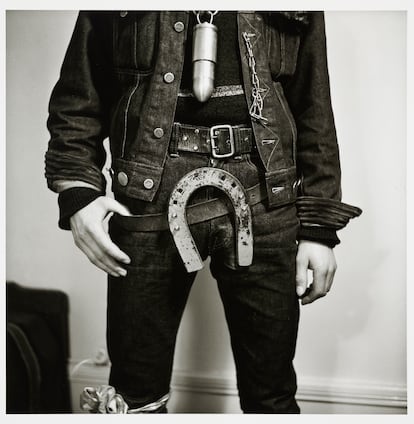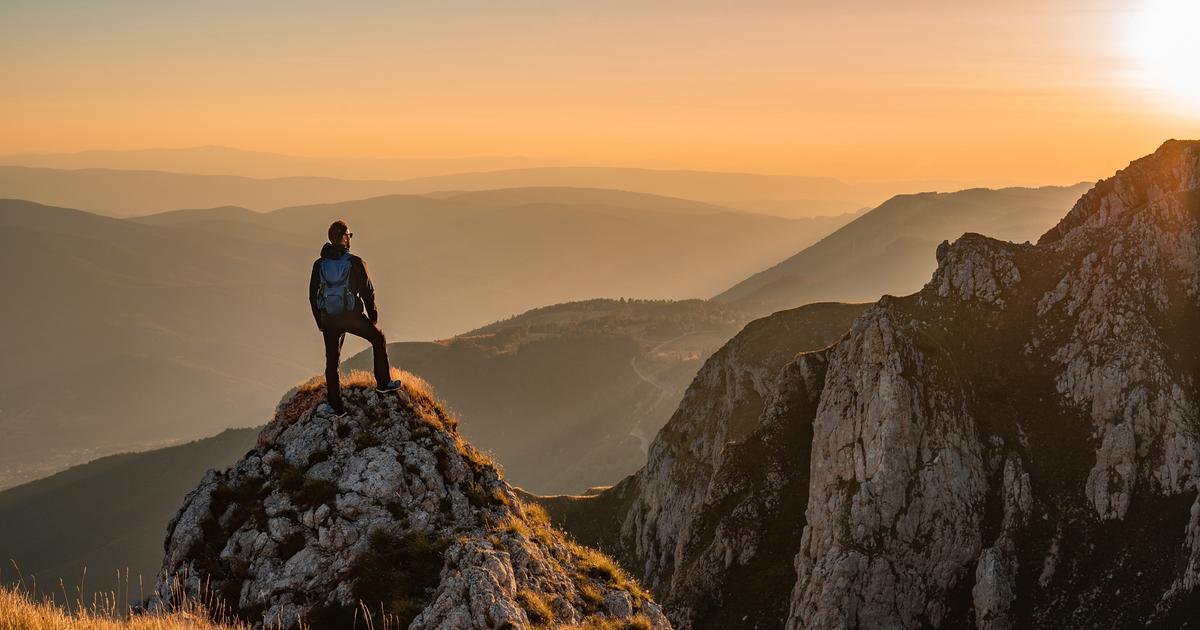'Alexandra, London, 2020', a portrait of Pieter Hugo collected in his retrospective in Arles.
You are not born a man, you become one. That is the maxim that seems to guide the Arles Encounters, a reference contest dedicated to contemporary photography, whose new edition reflects how this discipline has questioned the dominant model of masculinity, until it shows that it is nothing more than an unattainable fiction, source of eternal neurosis and patriarchal violence. At the Luma Foundation, in the shadow of the “Mediterranean lighthouse” that Frank Gehry has just erected in the old workshops of the regional railway, the
Masculinities
exhibition
examines the representations of manhood and the subversion of their traditional codes by fifty artists of the last decades, among which are names like Robert Mapplethorpe, Peter Hujar, David Wojnarowicz or Wolfgang Tillmans.
There are the portraits of powerful men that Richard Avedon made, with their unalterable white background, and those of the members of university fraternities that Andrew Moisey photographed, emblems of that toxic masculinity that today is in all mouths. Bullfighters with bloodstained faces, portrayed by Rineke Dijsktra, and the robust bodies of American football players, appear in a critical-study-looking Catherine Opie series on hypertrophic virility. But also the
cowboys
languid Sam Contis, Adi Nes' homoerotic approach to the soldiers of the Israeli army, less robust than his national myth swears, or the photos of the Taliban in a clandestine studio in Kandahar, in which they pose with kohl-stained eyes , holding hands like furtive lovers.
The sample, coming from the Barbican in London, reflects the iron norms of the genre, but also traces a genealogy of the dissident positions with respect to them that have emerged since the middle of the last century.
'Horseshoe Buckle' (1962), by Karlheinz Weinberger, one of the photos from the exhibition 'Masculinities', at the Luma Foundation in Arles (France).
“The exhibition demonstrates the emergence of a new tolerance. Until a few decades ago, any deviation from the hegemonic model was concealed or hidden. Today we see a recognition and even a vindication of what used to be on the margins ”, says the new director of the Arles Meetings, Christoph Wiesner, until now responsible for the Paris Photo show. For Wiesner, who is facing an edition in a smaller version than normal (35 samples in historic buildings in the French city, less than the 50 proposed by the contest in 2019), photography has played a crucial role in the deconstruction of that model hegemonic of manhood. "This discipline has shown that dominant masculinity is a social construction and that it does not respond to the intimate reality of each individual", adds the director,for whom the young generations are inscribed in "a questioning of the imposed models" and invent other ways of feeling like a man.
In another of the exhibits, the photographer Clarisse Hahn walks through the Parisian neighborhood of Barbès to dissect the different types of men who frequent its streets, from the old Maghrebi emigrant who never fully integrated to the small-time trafficker who keeps the market alive black located around a bustling subway exit. For his part, the filmmaker Sébastien Lifshitz participates in the festival with
Garçons sensible
, a new video that, based on archive material from the sixties and seventies, reviews the first representations that French television offered of homosexuality at a time when it was not yet decriminalized: interviews with the painter Bernard Buffet and his partner , Pierre Bergé, Yves Saint Laurent's future fatigue partner, to reports on
body building
contests
or those
homophobic and burlesque
sketches
of variety shows that perpetuated lifelong stereotypes.
"At that time, being gay was a military in the resistance," says Lifshitz, director of recent documentaries like
A Girl
and
Teenagers
.
“The protagonists of those documents were people who opposed a pattern that drowned them and that was a lie.
They refused to accept the social aspiration to conform to an authoritarian and oppressive model in which they did not recognize themselves, "adds the director, who also looks at young people with hope, among whom he detects a change" without turning back. "
A photograph of Campbell Addy in the exhibition 'The New Black Vanguard', dedicated to the fashion photography of black artists, in Arles.NICOLAS TUCAT / AFP
The main theme of this edition of the festival, which will be held again after its suspension in 2020 - although with less public: its opening week, reserved for professionals, registered a decrease of 20% in attendees compared to the last call -, it is the issue of identity, omnipresent in the current social debate. In the church of Sainte-Anne, the exhibition
The Black New Vanguard,
curated by Antwaun Sargent,
collects the work of a new generation of black photographers born in the nineties, such as Campbell Addy, Micaiah Carter, Ruth Ossai, Adrienne Raquel and Tyler Mitchell, perhaps the best known of them all thanks to the Beyoncé cover he signed for
Vogue
back in 2018, when he was just a
23-year-old anonymous
instagrammer
. The exhibition, located at the intersection between contemporary art and fashion photography, can be seen as a study on the evolution of the beauty canon of the black man, moving away from that indomitable sexuality attributed to him, with obvious racism, in colonial times to embrace an unusual androgyny and delicacy.
Meanwhile, at the Archbishop's Palace, a retrospective dedicated to the South African photographer Pieter Hugo collects a hundred portraits made in the last two decades, which also functions as a catalog of the different models of masculinity that coexist in the world, of the tough type that runs the streets of Cape Town to the young trans who reigns in the gentrified neighborhoods of London, all of them portrayed with the same empathy and an identical absence of cynicism. Just around the corner, Smith, a thriving and non-binary artist, stars in another of the outstanding exhibitions of this edition, which is held in Arles until September 26. Inside his hybrid images, close to science fiction, the vulnerable bodies of men who seem to be immersed in trance states pass through,as if they changed their skin and left behind, once and for all, the dictates of masculinity with which they were forced to grow up.









